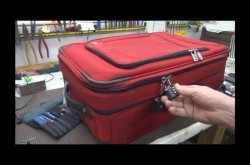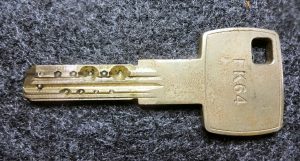 Dimple locks are VERY popular in Europe but, for some reason, really haven’t caught on here in North America. Perhaps N. American locksmiths guide customers towards products they are familiar with or have in stock. Dimple locks DO require special pinning kits, key cutting machines, and specialized tools – to say nothing of the training time and expense, so I guess that may be a major driver in that decision. Still, dimple locks are increasing in popularity as globalization takes hold. My personal belief is that dimple locks, on average, are more difficult to pick than pin tumblers and require unique picking tools that are not very common. A quick survey of the marketplace shows only 2-3 kits available, and most of them are expensive junk needing a lot of work to make serviceable. The only ready-to-go kit I’m aware of is the expensive (and difficult to find) Souber kit for Mul-t-locks. It works great for all dimple locks as well and needs very little preparation out of the box.
Dimple locks are VERY popular in Europe but, for some reason, really haven’t caught on here in North America. Perhaps N. American locksmiths guide customers towards products they are familiar with or have in stock. Dimple locks DO require special pinning kits, key cutting machines, and specialized tools – to say nothing of the training time and expense, so I guess that may be a major driver in that decision. Still, dimple locks are increasing in popularity as globalization takes hold. My personal belief is that dimple locks, on average, are more difficult to pick than pin tumblers and require unique picking tools that are not very common. A quick survey of the marketplace shows only 2-3 kits available, and most of them are expensive junk needing a lot of work to make serviceable. The only ready-to-go kit I’m aware of is the expensive (and difficult to find) Souber kit for Mul-t-locks. It works great for all dimple locks as well and needs very little preparation out of the box.
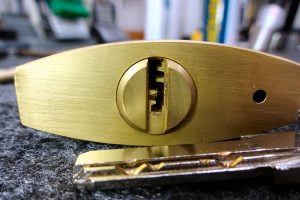 Basically, dimple locks are pin tumblers with their keyways turned onto their sides. The pins are located on the side as well, which robs you of most of your working space in the keyway. It is much easier for manufacturers to put restrictive warding in dimple keyways and that’ll make your life a lot more difficult. Exacerbating the difficulty, most dimples are made in Europe and are manufactured to tight tolerances and contain a variety of security pins. In fact, unlike American locks, Euopean locks are designed to defeat picking and have restrictive warding AND security pins. Some of them are downright EVIL.
Basically, dimple locks are pin tumblers with their keyways turned onto their sides. The pins are located on the side as well, which robs you of most of your working space in the keyway. It is much easier for manufacturers to put restrictive warding in dimple keyways and that’ll make your life a lot more difficult. Exacerbating the difficulty, most dimples are made in Europe and are manufactured to tight tolerances and contain a variety of security pins. In fact, unlike American locks, Euopean locks are designed to defeat picking and have restrictive warding AND security pins. Some of them are downright EVIL.
To get started I’d recommend the very common Yale dimple lock that you can find on eBay for around $20 US. It usually contains 5 pins, with one or two of them spools. The keyway is pretty wide open and allows you to get the feel of dimple picking without worrying too much about picking “around corners”. You can usually pick these using nothing more than a straight flag out of the dimple kit. If you don’t want to throw down the cash yet, you can make due with a half diamond from your pin tumbler kit. The feedback from dimple locks is exactly like that in pin tumblers, so if you can pick spools in a pin tumbler, you can pick them in a dimple as well.
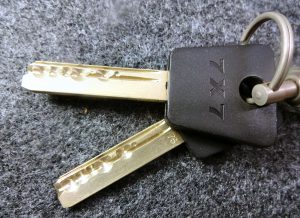 Once you’ve developed some dimple picking skills you’ll want to move to more advanced locks. To be successful, you really need to invest in a good dimple kit or make your own out of feeler gage. Making flat flags is not very difficult, but making curved flags can be…challenging. Expect to break off a lot of tips when trying to bend feeler gage. I’ve found that heating it to cherry red with a torch makes it a bit easier, but it does soften the metal – so expect some breakage.
Once you’ve developed some dimple picking skills you’ll want to move to more advanced locks. To be successful, you really need to invest in a good dimple kit or make your own out of feeler gage. Making flat flags is not very difficult, but making curved flags can be…challenging. Expect to break off a lot of tips when trying to bend feeler gage. I’ve found that heating it to cherry red with a torch makes it a bit easier, but it does soften the metal – so expect some breakage.
Another option is to buy an inexpensive kit like the SouthOrd or Goso dimple kits, then invest a LOT of time in
re-shaping the tips and sanding all the square edges round. The SouthOrd kit is much higher quality steel than Goso (or HUK, or any of the other Chinese stuff), but does cost a bit more. For most people, this is a lot better option than spending about $100 for the Souber kit. To fully prepare one of the “junk” kits will take almost an entire day. Since the kits are so inexpensive I’d recommend buying two of them because sometimes the tips simply break off when you’re working on them. This is “normal”, especially for the Chinese made kits so plan accordingly.
At a minimum, you’ll need a small flat flag and two curved flags – one left and one right. In the US and most of Europe the right curved flag will be your weapon of choice. For some reason many of the keyways in the UK are mirror images and require the left flag – no idea why this is. Just have one of each and you’ll have no problems. If you want to fluff up your kit you’ll want more curved flags with greater amounts of reach. These will allow you to pick “around corners” when the keyway is heavily warded. Thin flags are ALWAYS better than wide flags because they allow pinpoint placement and avoid setting multiple pins at once.
Tensioners are no big deal and don’t need nearly as much thought as with pin tumblers. I make mine out of thick wire that I taper with a hand file. That lets me shove it into the keyway and allows me to control the core in both directions. A tight tensioner gives you positive control of the core so you can tighten or release the tension on the core to pick those security pins. If your tensioner is loose in the keyway, that really isn’t possible. Tight is better so I really jam mine in there so it won’t flop around.
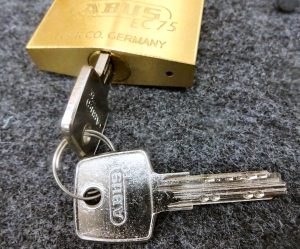 Once you’ve mastered the basic Yale, you want to progress to more difficult locks. Some of the difficult ones that I’ve encountered are BKS, Mauer, MCM, Zeiss Ikon, and Mul-t-lock. Yes, MTL makes standard dimple locks in the low end of their line, making them the perfect springboard to their pin-in-pin dimple locks. You can be sure than any mid to high end European dimple lock will give you hours of entertainment.
Once you’ve mastered the basic Yale, you want to progress to more difficult locks. Some of the difficult ones that I’ve encountered are BKS, Mauer, MCM, Zeiss Ikon, and Mul-t-lock. Yes, MTL makes standard dimple locks in the low end of their line, making them the perfect springboard to their pin-in-pin dimple locks. You can be sure than any mid to high end European dimple lock will give you hours of entertainment.
Dimple locks DO require some hand-eye coordination and a different set of skills to master. They are much more sensitive to tension control than pin tumblers, especially when fighting those security pins. You’ll find that picking the first couple of pins is usually pretty simple, but after that all bets are off, especially in the high quality locks.
Still, attacking dimple locks is a natural progression of your skills to becoming an expert lock picker. Good luck!
